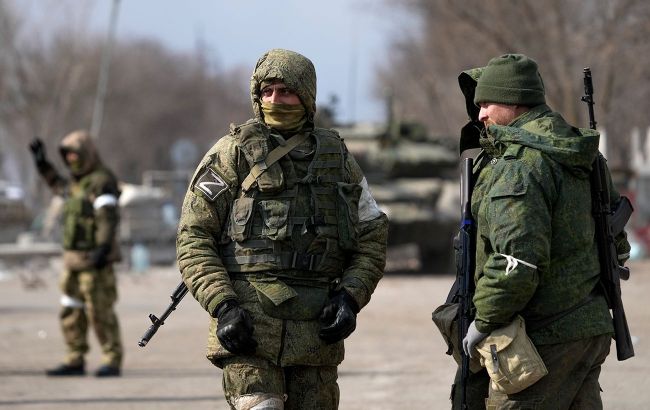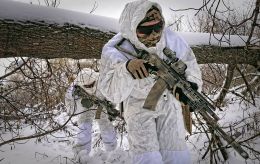Russia's successes on border of Donetsk and Zaporizhzhia do not indicate large-scale offensive - ISW
 Russian military (Illustrative photo: Getty Images)
Russian military (Illustrative photo: Getty Images)
Russian forces have recently resumed their offensive in the border area of Donetsk and Zaporizhzhia regions, achieving some tactical successes. However, this does not yet appear to be part of a larger operational offensive effort, according to the American Institute for the Study of War (ISW).
Analysts note that on October 12 and 13, both Russian and Ukrainian sources reported that Russian military units had launched an offensive in the vicinity of Levadne (southwest of Velyka Novosilka) and breached Ukrainian defenses.
According to a Ukrainian military observer, the enemy reached the outskirts of Levadne and is advancing towards Novodarivka.
Russian military correspondents claimed that Russian forces captured Levadne and advanced to the southern outskirts of Novodarivka, although the ISW found no confirmation of these Russian statements.

Experts concluded that these tactical gains were not the result of a sudden or unexpected Russian breakthrough.
The Institute emphasized that the enemy has become active in a previously quiet section of the front. This occurred in the western part of the Zaporizhzhia region near Kamyanske (south of Stepnohirsk) in early October. However, this activity has so far been limited and has only led to minor tactical successes.
Analysts believe that Russian forces may renew actions on less active frontlines in southern Ukraine for several purposes:
- to divert Ukraine’s attention from Russia's priority offensive operations in the Donetsk region;
- to coordinate Ukrainian forces along the southern front, preventing their redeployment to the Donetsk region.
The report suggests that coordinated Russian offensive operations in the border area between Donetsk and Zaporizhzhia regions could theoretically support broader Russian efforts to eliminate the Ukrainian salient in western the Donetsk region. They might also aid in advancing toward the H-15 highway (Donetsk-Zaporizhzhia) by pressuring the T-0518 highway (Velyka Novosilka-Bahatyr) and the western flank of Ukrainian forces in the western Donetsk region.
However, Russian forces have increased activity on the western bank of the Mokryi Yaly River, which runs westward along the T-0518 highway, as well as on the western outskirts of Velyka Novosilka. Currently, they are attempting to advance in areas that deviate from the western flank of the Ukrainian salient in the western Donetsk region.
To further their advance along the T-0518 highway and to press the western flank of the Ukrainian position, Russian troops will likely need to capture Velyka Novosilka. This would require intensifying offensive operations on the eastern bank of the Mokryi Yaly River, directly south of Velyka Novosilka.
Speaking about the Russian offensive near the settlements of Levadne and Novodarivka, it is theoretically aimed at cutting off the road connecting Hulyaipole with Velyka Novosilka. Such a move could disrupt Ukrainian logistics in Velyka Novosilka ahead of potentially intensified Russian efforts to capture the area.
However, ISW has not reported significant Russian offensives at the Donetsk-Zaporizhzhia border. There are also no signs of troop or resource build-ups for a large-scale assault comparable to Russian operations in eastern Ukraine.
On the contrary, Russian forces have redeployed some units from the Donetsk-Zaporizhzhia border and other areas in southern Ukraine to respond to Ukrainian operations in the Kursk region.

